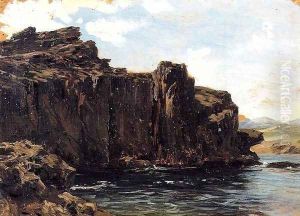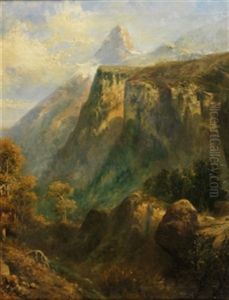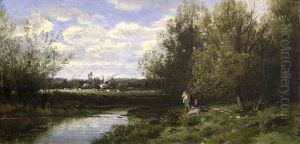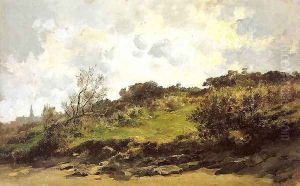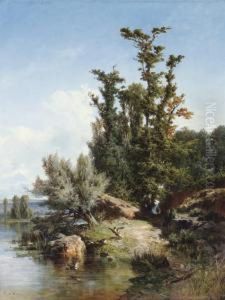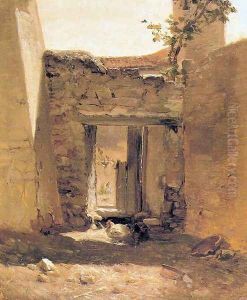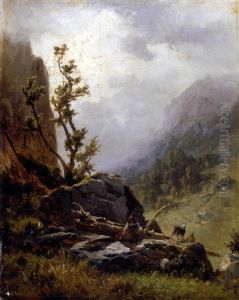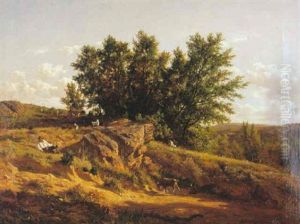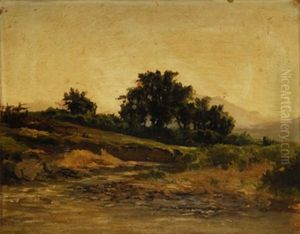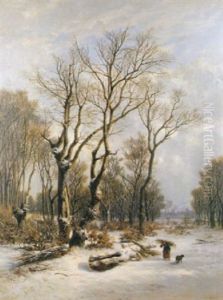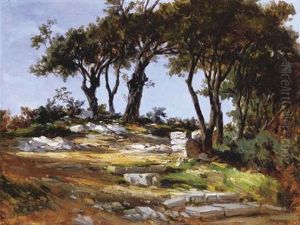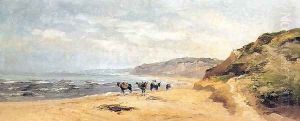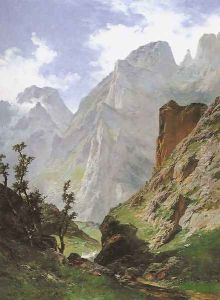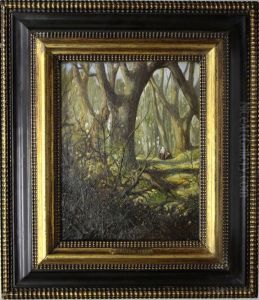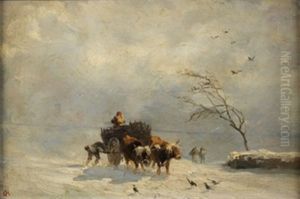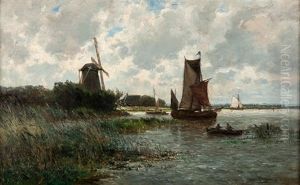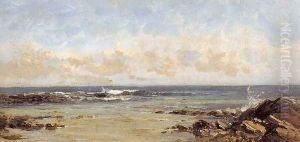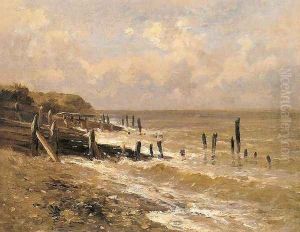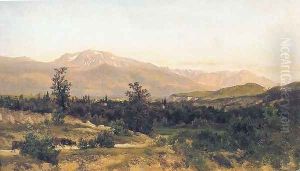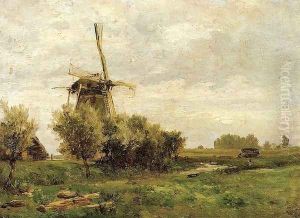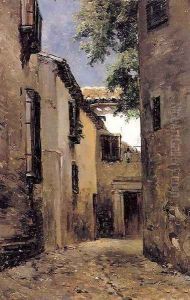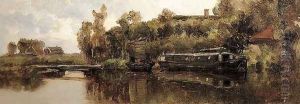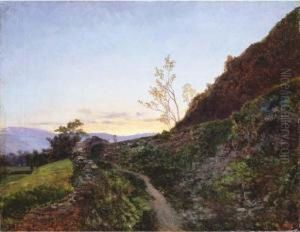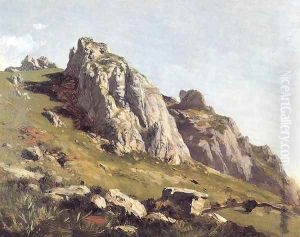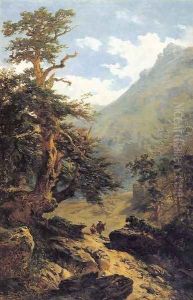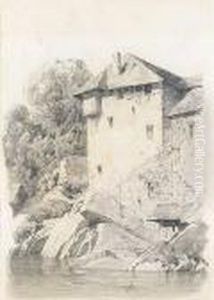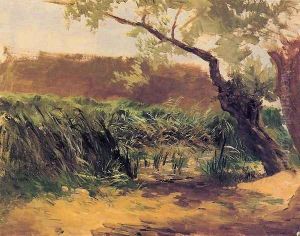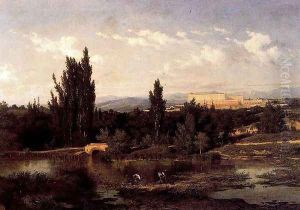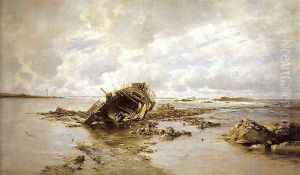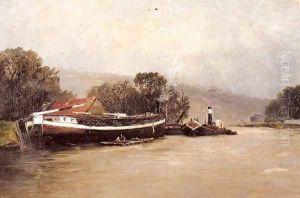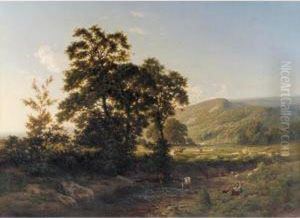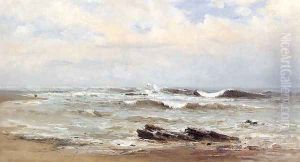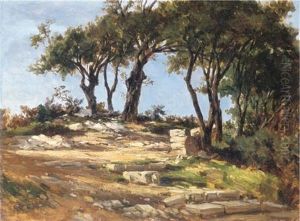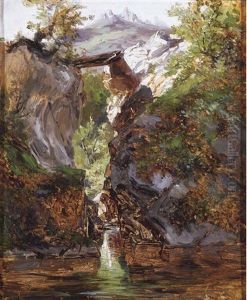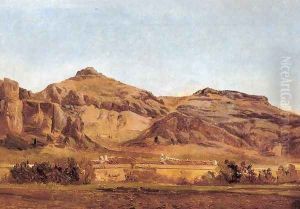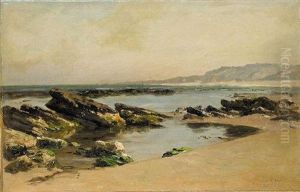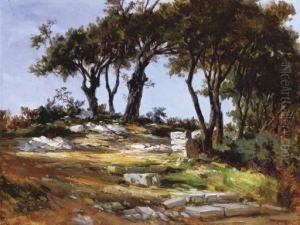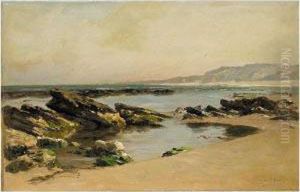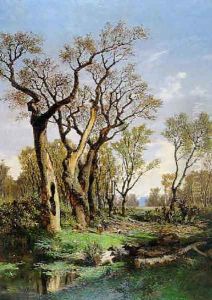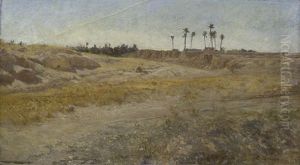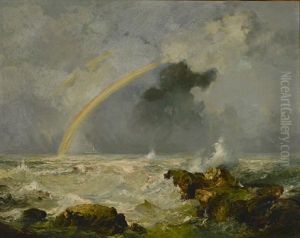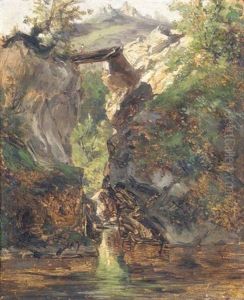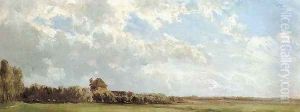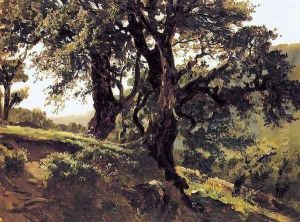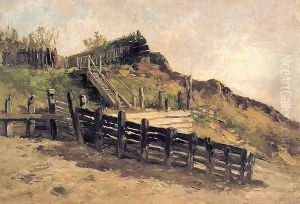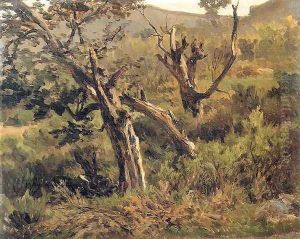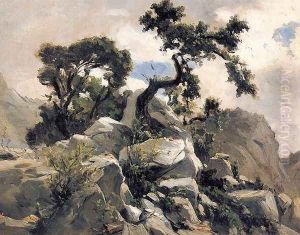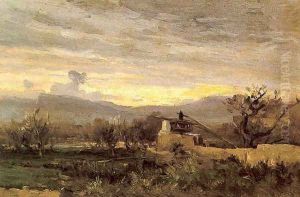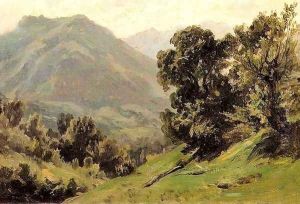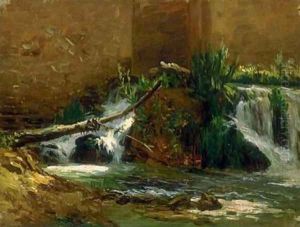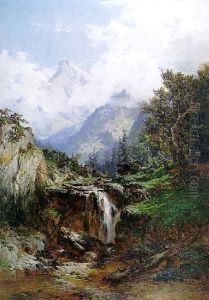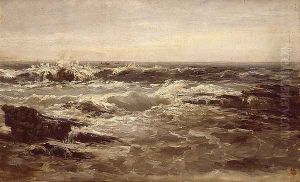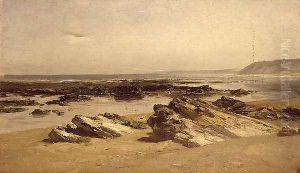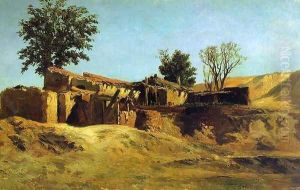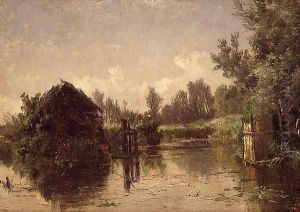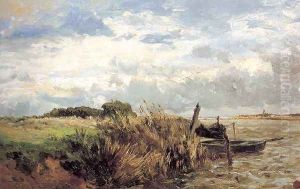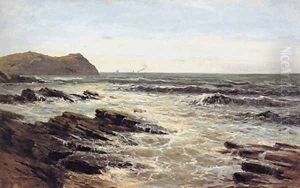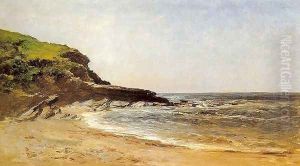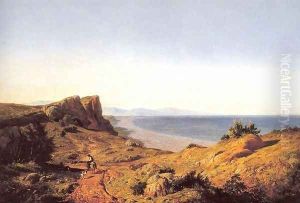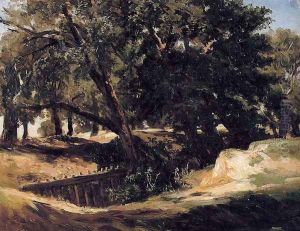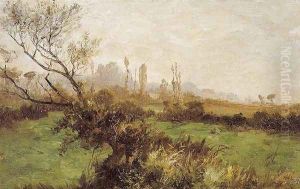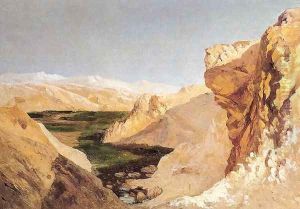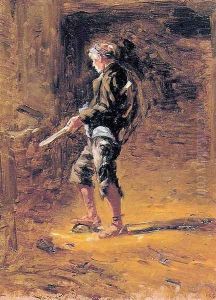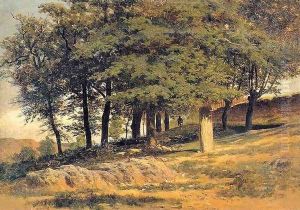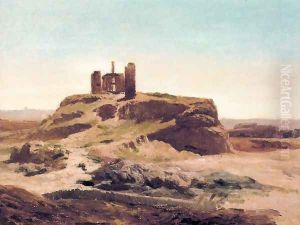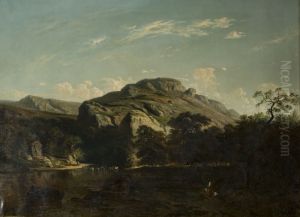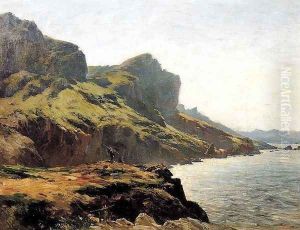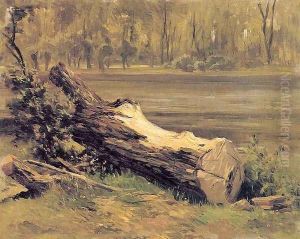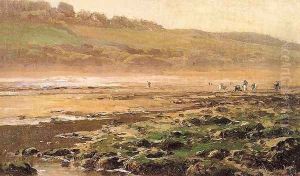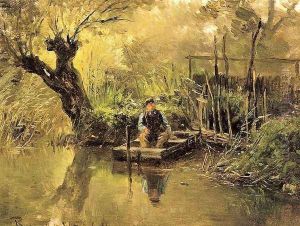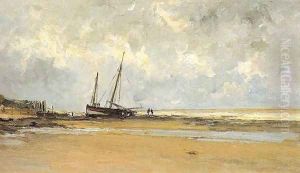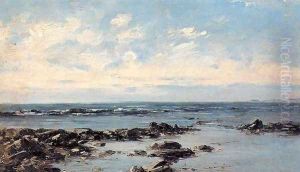Carlos de Haes Paintings
Carlos de Haes was a prominent Spanish landscape painter of Belgian origin. Born in Brussels on January 27, 1826, he moved to Spain at a young age and became a Spanish national. De Haes is considered a pioneer in the Spanish landscape art movement of the 19th century, introducing a realistic approach to landscape painting influenced by the Flemish and Dutch schools.
At the age of nine, Carlos de Haes moved with his family to Málaga, Spain. He began his artistic training at the Royal Academy of Fine Arts of San Fernando in Madrid, where he studied under Jenaro Pérez Villaamil who was known for his romantic landscape paintings.
De Haes's work marked a departure from the romanticism of his predecessors. He was influenced by the realist and naturalist movements, which were gaining prominence in Europe at the time. He sought to depict the Spanish landscape with a high level of detail and a commitment to capturing the true essence of nature, devoid of the idealization that was common during the Romantic era.
In 1857, Carlos de Haes became a professor at the Royal Academy of Fine Arts of San Fernando, and he played a crucial role in shaping the direction of landscape painting in Spain. He encouraged his students to paint en plein air (in the open air), which was a revolutionary approach in Spain at that time. This method allowed for direct observation of the environment, leading to a more accurate and natural representation of the landscape.
Throughout his career, de Haes won numerous awards and accolades for his work. He participated in national and international exhibitions, earning recognition for his contribution to the world of art. His landscapes often depicted the rugged and diverse terrain of Spain, from the lush countryside to the dramatic mountain ranges.
Carlos de Haes passed away on June 17, 1898, in Madrid. His legacy lives on through his numerous paintings that capture the beauty and diversity of the Spanish landscape and through his influence on future generations of Spanish artists. His work remains appreciated for its technical mastery and its role in the development of landscape painting in Spain.
